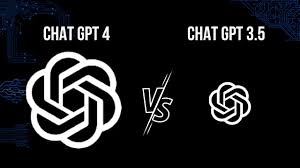ChatGPT is a powerful language model developed by OpenAI that uses deep learning algorithms to generate human-like text responses to prompts. It has a wide range of applications, including customer service, personal assistants, and language translation. In this article, we will provide a beginner's guide on how to use ChatGPT and explore some tips for getting the most out of the platform.
Getting Started with ChatGPT
To get started with ChatGPT, you will need to sign up for an API key on the OpenAI website. The API key will give you access to the GPT-3 model, which is the latest version of the ChatGPT series. Once you have your API key, you can start using ChatGPT in your applications.
There are several ways to interact with ChatGPT, including through a web interface, command line interface, or API. The web interface is the easiest way to get started, as it allows you to enter prompts and receive responses directly in your browser. To use the web interface, simply log in to your OpenAI account and navigate to the GPT-3 demo page. From there, you can enter your prompts and receive responses from the model.
Tips for Using ChatGPT
-
Use Clear and Concise Prompts: When entering prompts into ChatGPT, it is important to be clear and concise. The model performs best when given specific instructions and can become confused or generate irrelevant responses if the prompts are too vague or complex.
-
Provide Context: Providing context can help ChatGPT generate more relevant and accurate responses. For example, if you are using ChatGPT to generate product descriptions for an e-commerce site, providing information about the product's features, benefits, and target audience can help the model generate more compelling and informative descriptions.
-
Refine Your Prompts: ChatGPT is designed to learn from its interactions with users, and you can help the model improve its responses by refining your prompts. If you receive an irrelevant or nonsensical response, try rephrasing your prompt or providing more specific instructions.
-
Evaluate Responses: ChatGPT is not perfect, and it can sometimes generate biased or inaccurate responses. It is important to evaluate the responses carefully and edit or discard any that are not appropriate for your needs.
-
Use with Caution: ChatGPT can generate very convincing text responses, but it is important to remember that it is a machine learning model and does not have the same level of understanding as a human. It is important to use ChatGPT with caution and not rely on it for critical decision-making or medical advice.
Applications of ChatGPT
ChatGPT has a wide range of applications, including customer service, personal assistants, and language translation. Here are a few examples of how ChatGPT can be used:
-
Customer Service: ChatGPT can be used to provide instant customer support by answering frequently asked questions and providing information about products or services.
-
Personal Assistants: ChatGPT can be used to create virtual personal assistants that can help with scheduling, reminders, and other tasks.
-
Language Translation: ChatGPT can be used to translate text between different languages, making it easier for people to communicate across borders and cultures.
-
Content Generation: ChatGPT can be used to generate content for blogs, social media, and other platforms. It can generate headlines, summaries, and even full articles on a wide range of topics.
Conclusion
ChatGPT is a powerful language model that has a wide range of applications in the fields of customer service, personal assistants, and language translation.


No comments yet